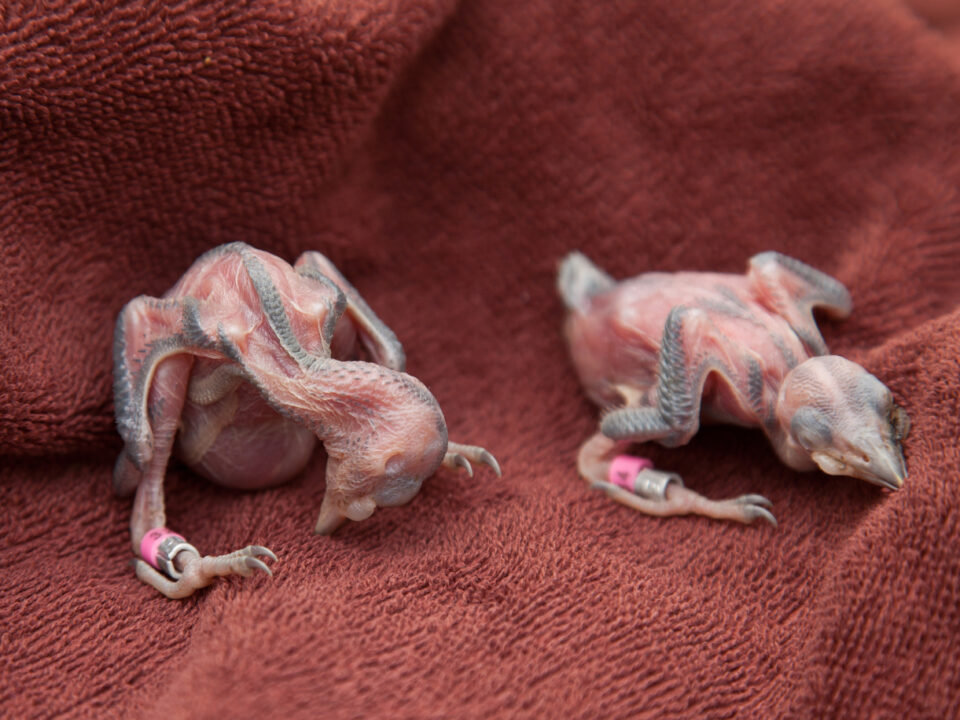Transmitter technical assistance provided to global partners
Camellia at Stonegate in Chesapeake 3/30
March 31, 2014Winners and losers in the population game
March 31, 2014
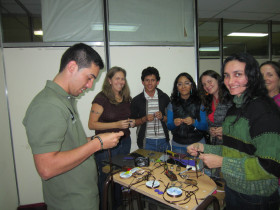
CCB’s Libby Mojica led a telemetry harnessing workshop for students at the 2014 Raptor Research Foundation conference in Argentina. Photo by CCB.
Telemetry is a valuable tool for understanding species behavior like movement patterns, dispersal distances, and survival rates to name a few. Fitting wildlife with telemetry units requires years of experience to ensure the capture and transmitter attachment do not stress or harm the animal or their young. CCB staff have over 25 years of transmittering experience with raptors, shorebirds, songbirds, and wading birds. These skills are learned by hands-on mentoring from one biologist to the next, passing on knowledge and techniques. CCB staff have trained or consulted with many other researchers around the globe ensuring safe transmitter attachment practices are being used on imperiled avian species. Below are some ongoing raptor projects in which we have recently provided technical assistance on harnessing techniques.
Golden Eagles (Aquila chrysaetos) in Finland
Olli-Pekka Karlin, lead researcher
Objectives: Track four golden eagles 1) to help reindeer herders find mammalian killed reindeer and 2) to understand golden eagle movements around Finnish wind farms.
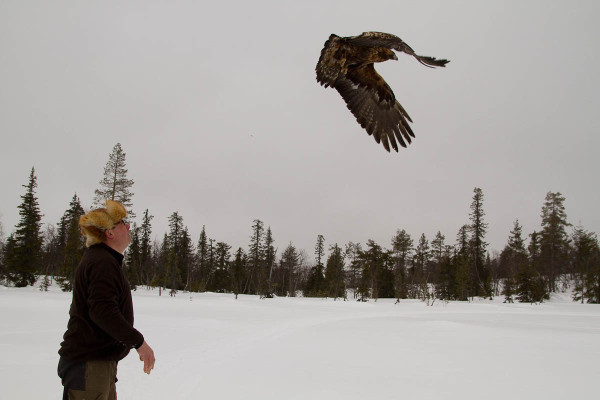
Olli-Pekka Karlin releasing a golden eagle in Finland. Photo by Lea Maalismaa.
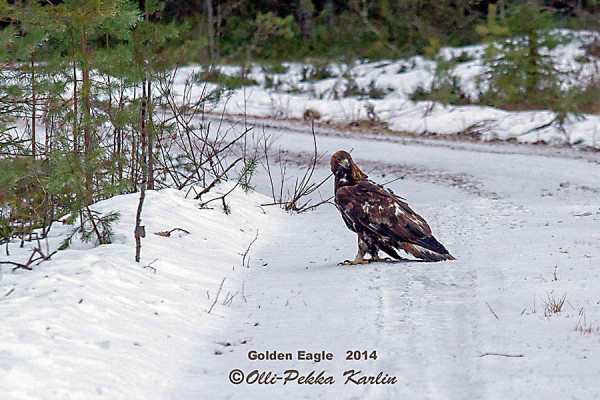
Golden eagle tracked by Finnish researchers. Photo by Olli-Pekka Karlin.
Wedge-tailed Eagles (Aquila audax) in Australia
Simon Cherriman, lead researcher
Objectives: Tracking wedge-tailed eagles 1) to understand foraging behavior of breeding adults 2) dispersal movements of juveniles and 3) survival of juvenile eagles.
www.wedge-tailedeagletracking.blogspot.com.au
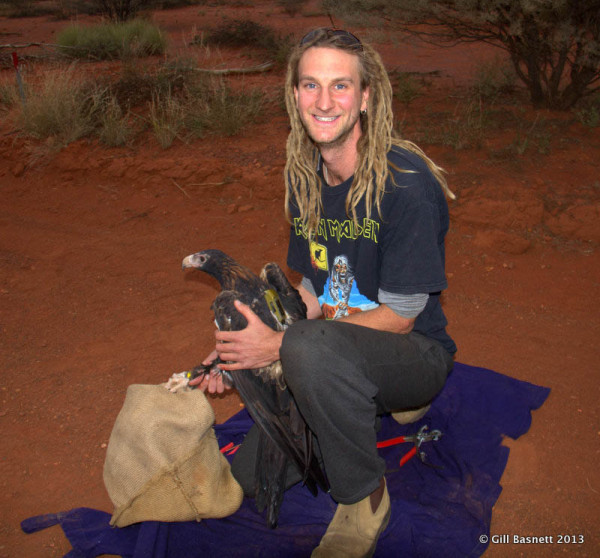
Researcher Simon Cherriman fitting a wedge-tailed eagle with a GPS transmitter. Photo by Gill Basnett.
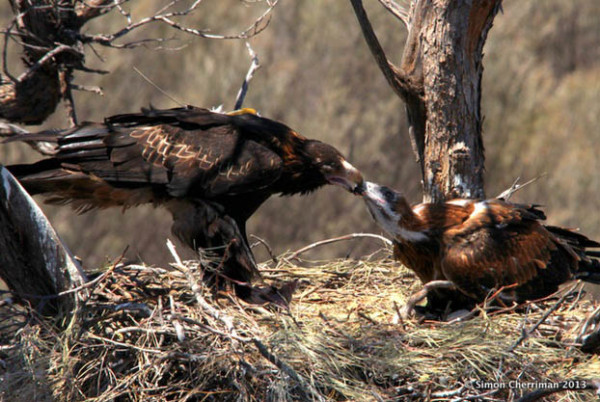
An adult and juvenile wedge-tailed eagle were both fitted with transmitters. Photo by Simon Cherriman.
Where Do Eagles Dare? (Trailer) from Simon Cherriman on Vimeo.
Crowned Solitary Eagle (Harpyhaliaetus coronatus) in Argentina
José Hernán Sarasola, lead researcher at Centro para el Estudio y Conservación de las Aves Rapaces en Argentina-Universidad Nacional de La Pampa (CECARA)
Objectives: Track juvenile crowned eagles to understand 1) movement patterns, 2) causes of mortality, 3) age to first reproduction, and 4) dispersal distances.
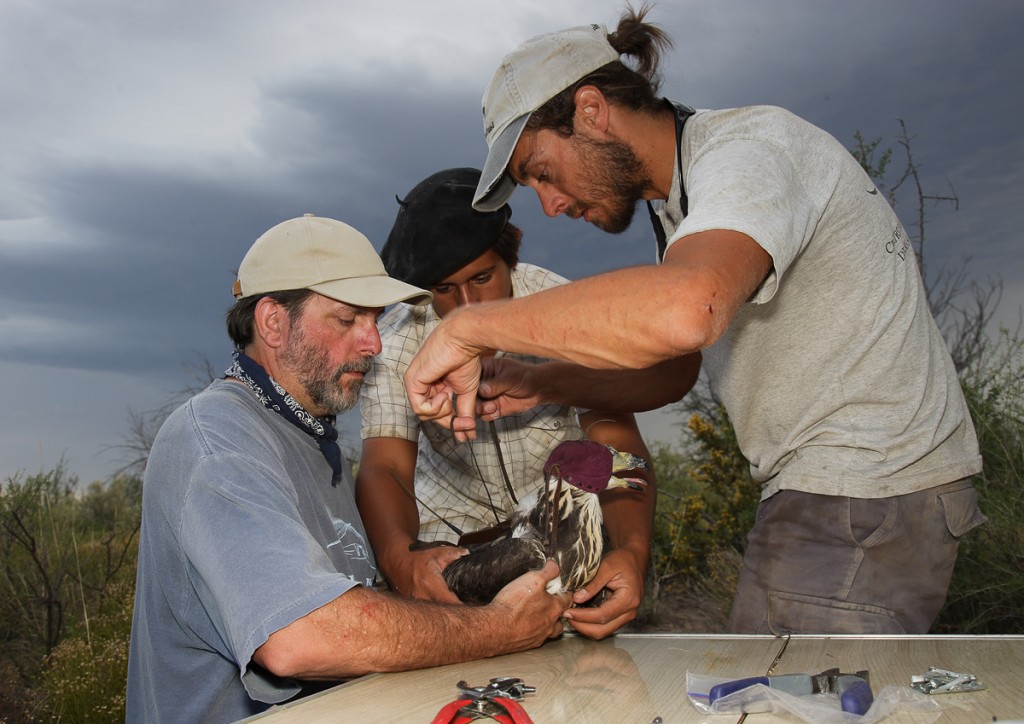
CCB director Bryan Watts (left) instructs PhD student Maxi Galmes on harnessing techniques for crowned eagles. Photo by Bart Paxton.
Written by Libby Mojica
March 31, 2014
Related posts
Adult female from Elkins Chimney territory. Both the female and male were lost from this site between 2024 and 2025 nesting seasons and were not replaced. This territory has been occupied since 1995. Five territories were vacated between 2024 and 2025 along the Delmarva Peninsula in VA. Photo by Bryan Watts

